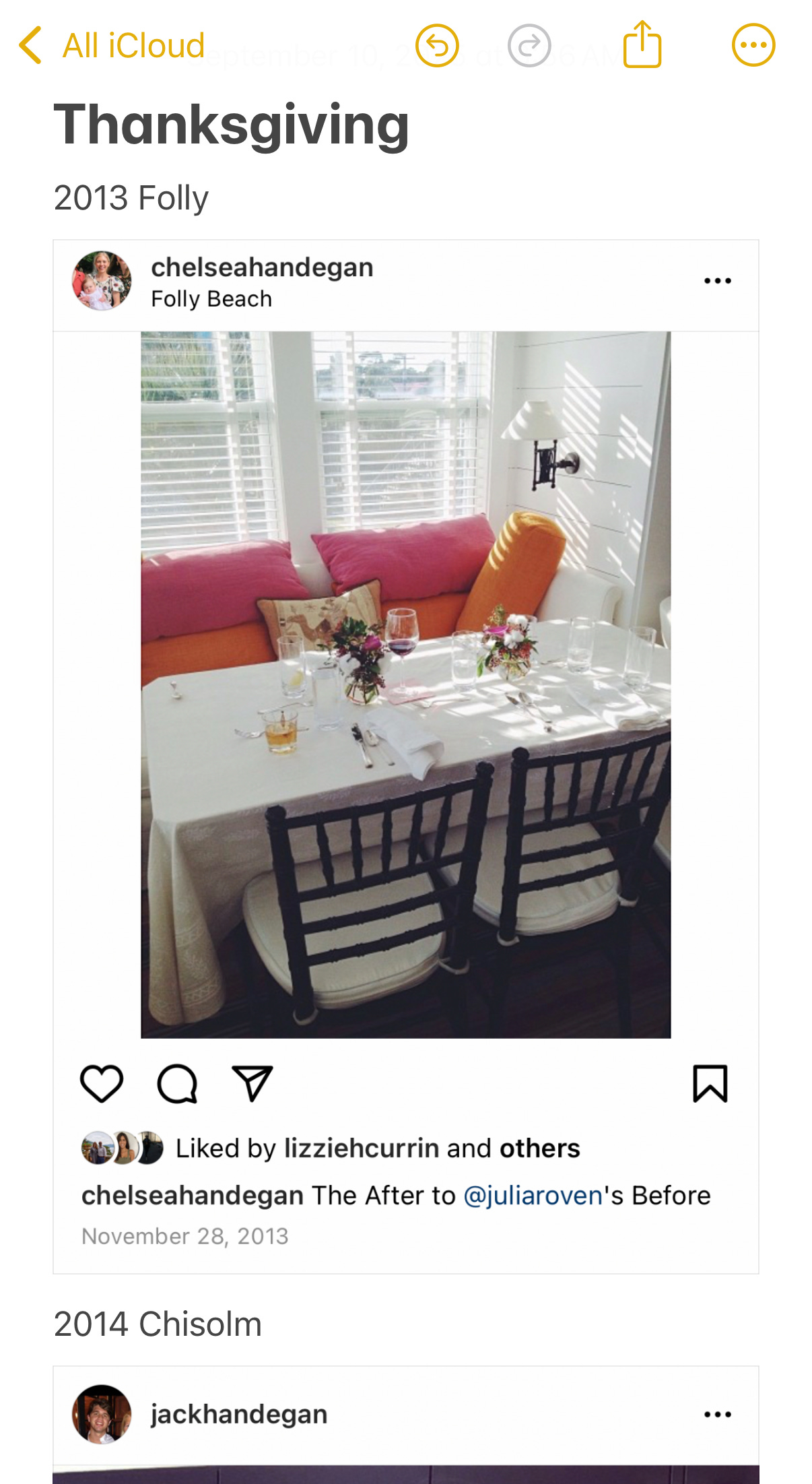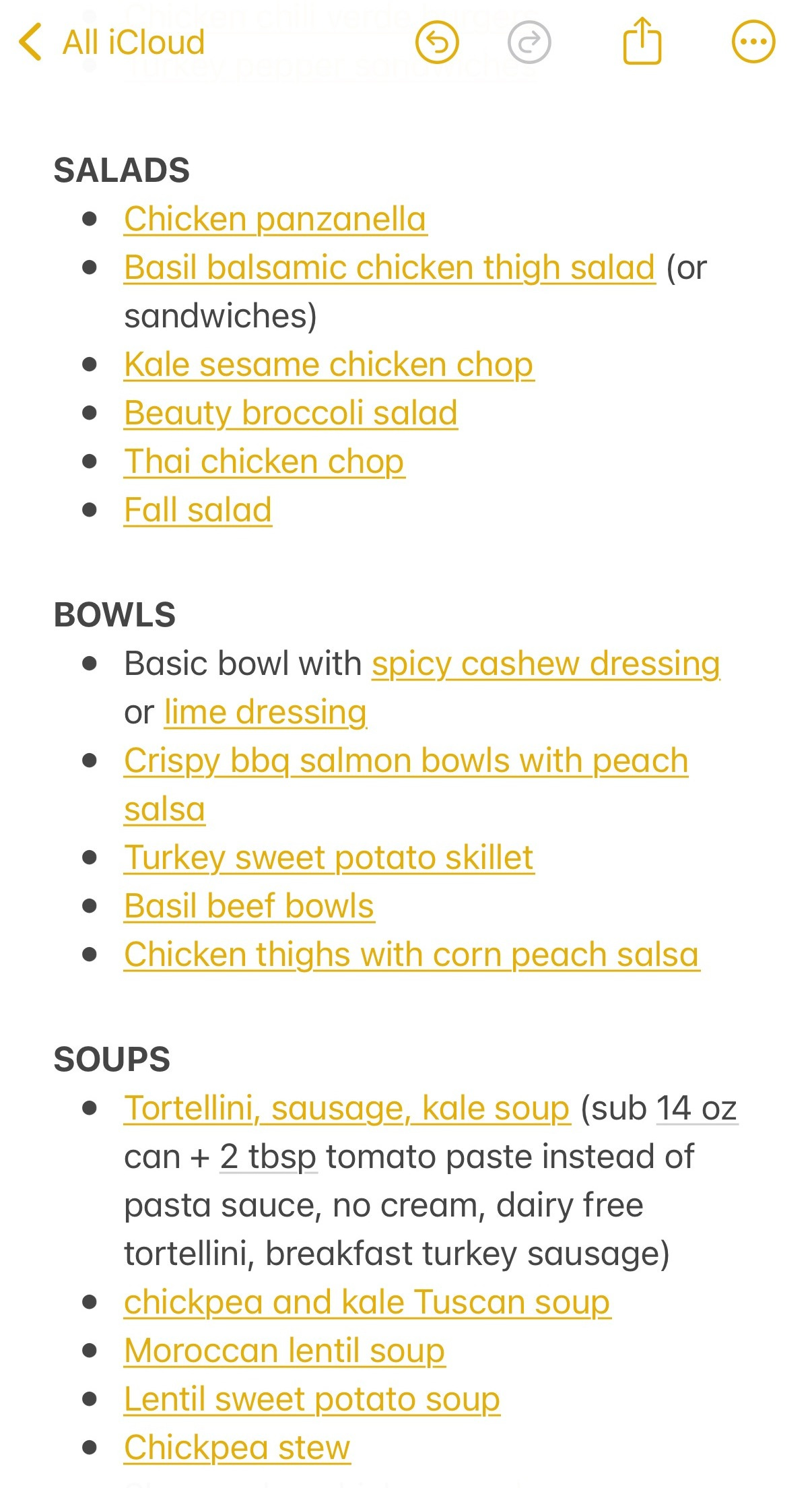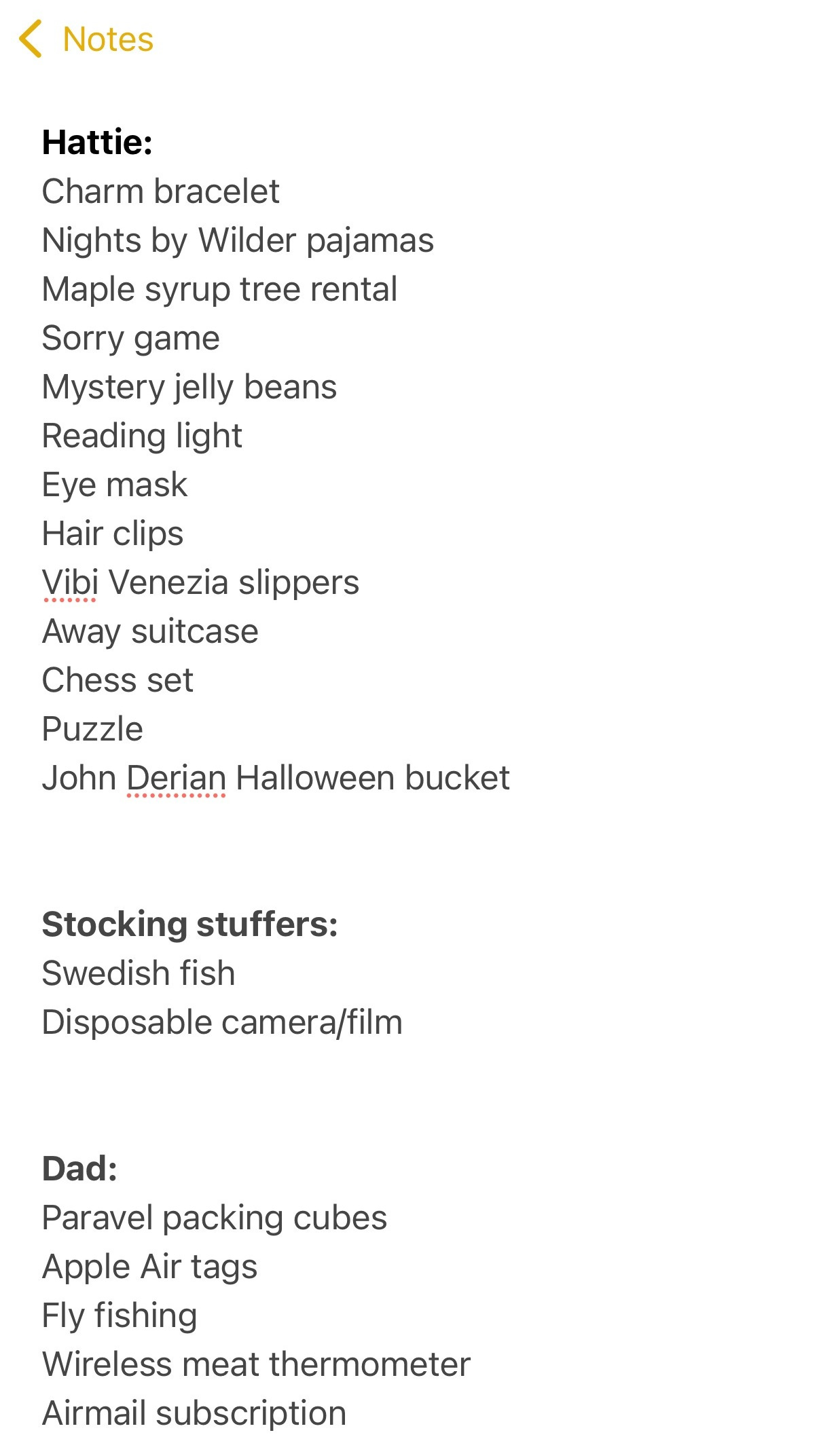Notes to Self
minimal effort, maximal returns
I am not a fan of the word hacks outside of the context of my favorite HBO show. It makes life sound like a game rather than an existence. Still, over time, I have collected tricks, shortcuts, and rituals that make my days run smoother and feel fuller. Some save me time, money, or sanity, while others simply make ordinary moments better. These are the small levers that make my life both easier and richer.
A NYT games subscription is the antidote to nighttime doom scrolling. $4 per month feels like a small price to pay for more sleep and lower cortisol.
On the subject of paid apps, audit your bank and credit card statements once in a while. Odds are you’ve been unknowingly funding Hulu since 2022 or forgot to kill a free trial. Drop every “cancel by” or “trial ends” date into your calendar with an alert. I do the same with medication refills and credit card perks. Why miss out on Ativan and airline credits?
Weekly meal planning keeps the guessing game out of it. Sunday morning, I sit down with this planner and select four meals I am going to cook. The other three nights will be any combination of eating out, ordering in, having leftovers, or choose your own adventure, i.e. grilled cheese and apple. This the rhythm that works for us. The planner has a built-in grocery list and is magnetized so the menu is posted to the fridge for inquisitive family members.
On a related note, a small refrigerator has made all the difference in how I plan meals and shop for groceries. Downsizing fridge space sounds counterintuitive, but it has completely rewired how I buy and cook. With limited real estate, there isn’t room for half-used sauces, mystery produce, or “someday” items waiting in the back. Everything has a purpose and a short timeline. It forces me to meal plan, shop intentionally, and actually use what I buy. The bonus is less food waste and the smug satisfaction of opening a fridge where you can see everything at a glance instead of spelunking for forgotten leftovers.
My daughter only has access to an iPad during car or air travel longer than two hours, and Audible has helped us to curtail even that small amount of screen time by replacing movies with audiobooks.
Piling on to the high protein trend, I aim for 30 grams of protein per meal, which is more doable than you may think. I am still going strong on my Sola bagel + cottage cheese breakfast combination (28g) with no end in sight and no need for a morning snack. I also love Truvani protein powder and Catalina Crunch cereal in smoothie bowls.
Protect your peace and mute people on Instagram. People who diminish your confidence, people who make you jealous, people whose social media presences may affect your IRL perception of them. If you feel triggered, they’ve got to go.
Don’t work with or for your friends or family. It never ends well. No exceptions.
Letting clients know you are available after hours is a slippery slope. Schedule emails written after hours to send at 9:00 am the following morning. And don’t reply to work texts on weekends.
The kitchen set in Freakier Friday (inspiration can strike anywhere!! ) had these lidded glass containers, which I promptly ordered to hold my daughter’s morning overnight oats in lieu of saran wrap covered bowls. I make them Sunday night to expedite the morning routine for the week. I beef them up with PB Fit, chia seeds, kefir, honey, cinnamon, and whatever fresh fruit we have on hand.
You know that ASMR thing the masseuse does after your treatment when they whisper, “Be sure to hydrate”? Cute, except my daily intake is basically two coffees and a Coke Zero. In an attempt to change my ways and make amends with my kidneys, I am relying heavily on a combination of sparkling water and flavored electrolyte tablets.
After-school homework meltdowns were ruining my evenings, so I outsourced the problem. Now my daughter stays for extended day, where homework is required before play and snacks are provided. I only keep her there 30–60 minutes, which is just enough to dodge the afternoon drama without the parental guilt. She is fed, work is done, and we both get to enjoy the evening. Win/win.
I once came across the idea that refusing to outsource is a “blue-collar mindset.” While the assertion is loaded and overly simplistic, there’s truth buried in it: knowing when to outsource is a skill. It’s not about being unwilling to roll up your sleeves; it’s about recognizing the value of your time, energy, and focus.
In my own work, I know exactly what an hour of my time is worth, which makes the math behind outsourcing simple. If a task eats up hours I could be spending on higher-value work, the decision is clear. But it’s not just about the dollars, it’s also about the mental load. Sometimes the true cost of doing it yourself isn’t the hours spent, but the distraction, the frustration, or the weight it adds to your already full plate. Outsourcing isn’t laziness. It is a strategy that creates space to operate at your highest level, both professionally and personally. This can be as habitual as hiring housekeeping and landscaping or as occasional as using grocery delivery. Ultimately, outsourcing is about choice. It’s the freedom to decide where your time is best spent, and to invest it in what you do best, without being weighed down by everything else. A few areas to consider:
Personal life outsourcing: laundry service, meal prep kits, dog walking, car detailing, tutoring, babysitting/childcare, holiday gift wrapping, personal styling.
Household outsourcing: landscaping, handyman work, seasonal maintenance (gutter cleaning, garbage bin cleaning), furniture assembly, tech setup, closet organization.
Professional outsourcing: bookkeeping, payroll, social media management, graphic design, copywriting, virtual assistants, IT support, legal review. I hire out for AutoCAD drafting now, which has saved me so much time.
Micro-outsourcing: automatic bill pay, Amazon Subscribe & Save.
Am I the only one who comes back from vacation, living out of a suitcase with barely any of my stuff, and suddenly wants to own nothing? “Nothing feels better than living with less” would be the Marie Kondo version of “nothing tastes as good as skinny feels.” I am on a perpetual mission to live minimally, a task made infinitely harder by a child who outgrows toys and clothes faster than I can keep up with and a husband with a chronic Amazon habit. I am embarrassingly minimalist. Though social media and culture scream, “more, more, more,” I have always been drawn to less. Less responsibility, less clutter, fewer things to clean and care for. The only cure, in my experience, is owning less. We do big clean-outs quarterly (sometimes monthly, and always before birthdays and Christmas) and have systems for handling everything we let go of:
The Real Real and Ensemble Consignment for my clothes
3 Little Hares for my daughter’s clothes
My Sister’s House dropbox for her toys and household items
Blessing Box for nonperishable pantry items
Streamline your skincare regimen. You’re doing too much. Sunscreen (yes, Gen Z), Tretinoin, and Botox are the holy trinity for youth.
I am newly hooked on iPhone automations. When I walk into a grocery store, the corresponding list for that store opens instantly. And at 10:15 every night, my phone displays all the photos I’ve taken on that date, which allows me to tackle my photo clean-out in small, manageable bites.
Always write down momentarily good ideas, and don’t rely on your memory alone. Lists are my brain’s dumping ground to clear the clutter so I can actually think.
On Lists
Lists are fascinating because they are both deeply utilitarian and strangely intimate. At face value, they’re just stacked words, but the form reveals far more than the content. A grocery list shows what you eat, yes, but also how you live, how you shop, and even how you value your body. A to-do list can be a productivity tool, but it can also be a form of corralling the chaos of daily life and self-soothing.
Everyone has their own philosophy of list-making. Some people keep a singular master list that never ends. Others prefer dozens of micro-lists scattered across notebooks, notes apps, sticky pads, and margins of receipts. Some are neat and color-coded; others are chicken-scratch barely decipherable even to the author. And then there are the ritualists: the people who rewrite lists daily or weekly, not because they have to, but because the act of writing is the ritual.
The funny thing about lists is that they are both private and performative. There’s a reason so many of us love “what’s in my bag” or “10 things I can’t live without” articles and videos. Lists are confessions disguised as order. They’re shorthand diaries. For me, lists are how I outsource memory and calm the noise. They’re the scaffolding that allow me to hold less in my head.
Here are some of my lists I keep in rotation (screenshots below):
Thanksgiving: archival proof of Thanksgivings past, including photographic evidence, to pull out receipts during the inevitable “whose year is it?” dispute
Meals: Every home-cooked meal my family enjoys, categorized by cuisine, with hyperlinks or references to the recipe origin, for quick reference when meal planning
Walk-in Restaurants: the emergency plan for when someone’s hangry
Gifts: a running log of ideas so birthdays and holidays don’t turn into thoughtless panic purchases
Jack To-Do: because a shared list doesn’t feel like nagging
Whole Foods, Costco, Trader Joe’s, and Other: a list for each, duh
Dog Names: you never know
Friends and Actors: a compulsive record of which actors could play which friends when the association strikes
Andddd if you’re as intrigued by the psychology of lists as I am, I recommend this This American Life episode, which explores why we make them and what they reveal about us. It made me realize that list-making isn’t just about efficiency but also identity.
Consider this list checked xx






Your posts are some of my very favorite to read! Relatable, thoughtful, and wise. I am similar on the topic of lists - we have a master to-do list that branches out into many others, including short-term, long-term, places to go, and things to buy. Systems make a huge difference.
How do you do the photo automation? That sounds amazing!